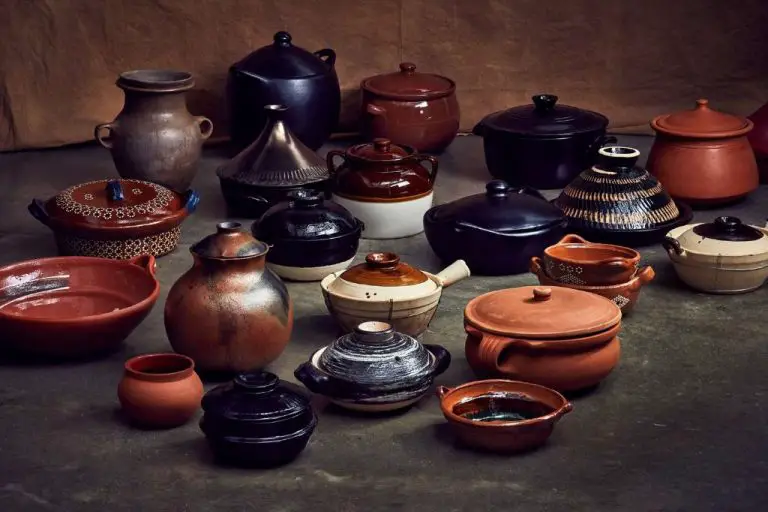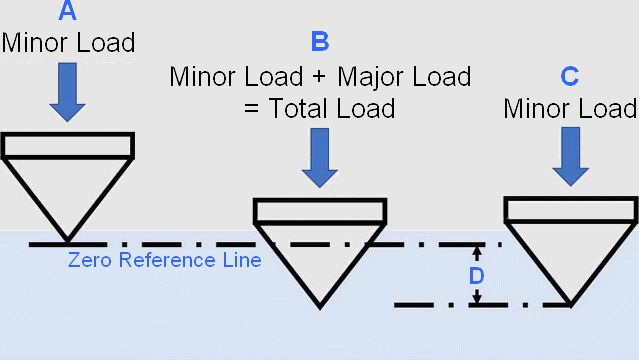Do You Remove Charger Plates Before Eating?
What Are Charger Plates?
A charger plate, also known as an underplate or service plate, is a large decorative plate that is placed under the dinner plate as part of a formal table setting (source: https://www.restaurantware.com/blog/post/what-is-a-charger-plate/). The charger plate serves both decorative and functional purposes in a multi-course meal.
Charger plates are typically 9-13 inches wide and made from materials like porcelain, ceramic, glass, metal, and wood. They provide an elegant base for the dinner plate and complements the tableware. Chargers allow used dinnerware to be removed easily between courses without disturbing the elaborate place setting (source: https://en.wikipedia.org/wiki/Charger_(table_setting)). The larger surface area also provides more space for additional utensils, glasses, and decor.
In summary, a charger plate is an ornamental plate placed underneath the dinner plate at upscale restaurants and formal dining occasions. It elevates the place setting visually while serving practical purposes in multi-course meals.
History and Origins of Charger Plates
Charger plates originated in the Middle Ages in Europe. The word “charger” comes from the Middle English term “chargeour” which dates back to 1275-1325. It referred to a large, shallow dish used to serve and present food during medieval banquets. The plates were known as “chargers” because they were used to “charge” or load up food and carry it from the kitchen to the dining hall.
In wealthy medieval households, the first course of a large meal would be carried from the kitchen and served onto a charger plate in front of each guest. The charger plates allowed servers to easily transport and present the food in an elegant manner. Once the first course was finished, the charger plates would be removed and replaced with clean charger plates for the next course to be served. This tradition developed into a sophisticated dining ritual among nobility and aristocracy.
According to https://en.wikipedia.org/wiki/Charger_(table_setting), charger plates became popular dining accessories by the 19th century Victorian Era and were considered an important part of elegant table settings. They were used to protect and decorate the table between courses. The tradition of charger plates continues today, although they now serve a more decorative function in formal table settings.
Proper Charger Plate Etiquette
There are certain etiquette rules for when to put out charger plates and how they should be set:
Charger plates are traditionally put out before guests are seated at the table. They serve as decorative placeholders to dress up the table setting before food is served. According to etiquette experts Myka Meier, chargers should be set approximately 1-2 inches from the edge of the table.
Once guests are seated, the charger plates remain in place until just before the first course is served. At that point, the charger plates are removed, leaving the place settings ready for food. This is an important etiquette rule, as you do not eat food directly off the charger plate. The chargers are removed to reveal the dinner plates underneath.
According to traditional etiquette, the charger plates should be removed from the left side. Servers take the chargers off gently to avoid disturbing the place setting. However, in informal home settings, it is acceptable for guests to remove their own charger plates prior to the meal.
Charger plates can be left on the table if desired, especially for informal meals or buffet-style serving. However, they should not remain in place once food is served, as eating directly on a charger is considered improper etiquette.
Do You Remove Charger Plates Before Eating?
Yes, it is proper etiquette to remove the charger plate before food is served. According to Sasha Nicholas, “Once the entree is served, the charger is taken off the table and replaced with the main dining plate. Dessert should never be served on a charger.” The charger plate is not meant to actually eat food off of. Its purpose is decorative and to help protect the tablecloth.
The charger plate provides a base layer and should complement the place setting. But it is removed before the first course is served. At a formal dinner, servers will remove the charger plates after appetizers and before serving the main course. At a more casual meal, the diners at the table remove their own charger plates. The food plates and utensils will be set directly on the tablecloth or placemat after the charger is removed.
So in summary, yes, you do remove the charger plate prior to eating the meal. The decorative charger should be cleared before food is served directly onto the dining plates.
Reasons to Remove Charger Plates
There are several reasons why it’s recommended to remove charger plates before serving the main course:
Visual Appeal
Leaving the charger plate on the table can clutter the visual presentation of the place setting once the dinner plates and food have been served. Removing the charger creates a cleaner, less cluttered look that puts more focus on the dinnerware, food, and decor.1
Space for Food Plates
Removing the charger plate creates more space and room for the dinner plate. This prevents a crowded feeling on the table and allows the dinner plate to fit more comfortably within the place setting.2
Avoid Noise
Leaving the charger plate underneath the dinner plate can cause noise as the utensils hit both plates while eating. Removing the charger prevents this clattering sound and distracting noise at the table.3
Occasions Charger Plates are Used
Charger plates are most commonly used for formal dining occasions when an elegant table setting is desired. The top three occasions when charger plates are traditionally used include:
Formal Dinners: Charger plates are a staple at upscale, multi-course formal dinners. They add a polished look to the place setting. According to The Emily Post Institute, charger plates should be part of a formal dinner table setting.
Holiday Meals: Holidays like Thanksgiving, Christmas, and Easter call for an elevated tablescape. Charger plates help achieve this by dressing up the place settings. They provide an opportunity to add festive colors and patterns to the table.
Weddings: Charger plates are ubiquitous at weddings, especially for the reception dinner. They help create an elegant, sophisticated tablescape fitting for a wedding celebration. From rustic chic to modern glamour, charger plates fit into any wedding style.
In summary, charger plates bring a sense of occasion and ceremony to formal dining experiences, which is why they are commonly used for formal dinners, holidays, and weddings.
Charger Plate Alternatives
If you want to save money or try something different, there are many creative DIY alternatives to traditional charger plates. One popular option is to use fabric placemats or table runners under the dinner plate. These come in a wide variety of colors, patterns, and materials like cotton, linen, burlap, lace, etc. Placemats and runners can provide a polished, elegant look for far less cost than real charger plates. According to Storables, fabric placemats are inexpensive, easy to find, and you can mix and match colors and textures for a customized table setting.
Table runners are another versatile charger plate alternative, as they come in many sizes to fit your table. Runners are also reusable and easy to clean. DIY designer Emma Lea Mullins recommends using burlap runners with lace overlay for a romantic, vintage style table. Linen or cotton runners in solid colors work well for more formal occasions. Experiment with different placemat and runner materials to find options that match your event style and budget.
Popular Charger Plate Materials
Charger plates are made from a variety of materials, but some of the most popular and traditional options include:
Porcelain
Porcelain is one of the most common materials for charger plates. It is an attractive, durable ceramic that can be found with glossy or matte finishes. Porcelain chargers have a classic, elegant look and feel. They can be plain white or found in myriad patterns, colors, and decorative styles. Porcelain is an ideal material for both casual and formal table settings.[https://www.webstaurantstore.com/article/13/what-is-a-charger-plate.html]
Metal
Metal charger plates are having a resurgence in popularity. Stainless steel, silver, copper, and other metals make for sleek, modern chargers. Metal plates have an industrial chic look. They provide a shiny, lustrous base layer under dinner plates. Metal chargers are also quite durable and easy to clean. However, they can show fingerprints.[https://www.latkatlinens.com/post/what-is-the-purpose-of-a-charger-plate]
Glass
Glass chargers allow diners to see the table underneath, creating a translucent, layered effect. Clear glass, colored glass, and patterned glass chargers all add an elegant touch to place settings. Glass charger plates pair especially well with delicate China dinnerware. They have an expensive, upscale aesthetic. However, glass charger plates are fragile and prone to chipping or breaking.
Charger Plate Style Tips
When using charger plates, you’ll want to put some thought into how to style them for the best visual impact. Here are some tips for stylish charger plates:
Match the color of your charger plates to the formality and style of the event. For formal occasions like weddings, classic metallic colors like silver, gold, or platinum look refined. For more casual gatherings, brighter colors can liven up the table. According to CV Linens, chargers in shades like cobalt blue or verdant green complement fresh, seasonal meals.
Aim for high contrast between your charger plates and dinner plates. Pick charger colors that pop against white dinner plates for maximum drama. Conversely, choose a neutral charger to let vividly patterned or colored dinner plates take center stage.
Consider mixing metals and textures for interest. Using chargers in silver, gold, copper and hammered metal provides appealing visual variety.
For a unified aesthetic, match your charger color to your table linens, flowers, and other decor elements. However, don’t be afraid to shake things up with an unexpected or contrasting charger color too.
Caring for Charger Plates
Proper care is important for preserving your charger plates and preventing damage. Here are some tips for cleaning and storing your charger plates:
Handwashing is recommended over machine washing. Use a soft cloth or sponge with mild soap and warm water. Avoid abrasive cleaners or scrubbing too hard, as this can scratch the plate’s surface over time. Rinse thoroughly and dry immediately with a soft towel. Letting water sit on decorative chargers can lead to permanent water spots and staining [1].
After washing, check for any remaining debris between ornate edges or engraved patterns. A soft brush can help remove any stuck-on food. Polish with a microfiber cloth to restore shine.
Proper storage helps prevent chips, cracks, or scratches. Place a soft cloth between stacked chargers. Store in a cabinet protected from dust and harsh sunlight. Consider using charger plate stands or racks for organized, visible storage while protecting delicate rims.
With proper care and handling, your high-quality charger plates can maintain their beauty for many years of elegant dining.




